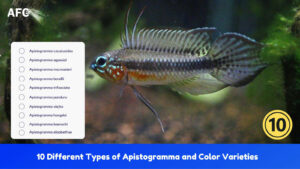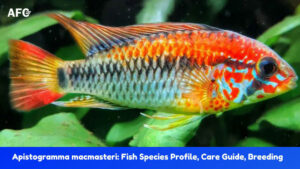Do your betta fish look sluggish and are unable to display their bright colors?
Maybe it’s time to change their diet and add a healthy mixture of proteins, nutrients, and minerals. The best way to do this is to give them treats from time to time so that they are happy.
These treats could be live food or even homemade recipes provided that you add the correct ingredients. So, today we will discuss betta fish treats to help you chart a proper diet.
Do Betta Fish Need Treat?
Betta fish do need treats if you want to keep them healthy and happy. It’s important to remember that they never lose their wild traits completely and normally feed on the surface of the water, scooping up live food.
By mimicking their natural habits and adding treats to the water, you can ensure that they get regular exercise.
What Are The Best Treats (Or Snacks) For Betta Fish?
Frozen Brine Shrimp And Bloodworms
When charting out your betta fish’s diet, you must include foods that are rich in proteins. While most fish owners might be skeptical about feeding them frozen food, freeze-dried brine shrimp are extremely nutritious.
Similarly, bloodworms are a rich food source that the betta fish may enjoy. Moreover, bloodworms and frozen brine shrimp contain essential minerals like iron which many live foods lack.
So, remember to include tiny portions of these treats as part of their main diet, and the fish should be fine.
Live Food
In the wild, betta eats mostly live prey. There are tons of live food options out there but not all will get you that perfect glowing color. I have listed some great choices below.
Blackworms
Coming to live foods, betta fish love to eat blackworms, although it may not be the first choice for aquarists. But you might want to reconsider your options, given that they are rich in nutrients and crucial for a healthy diet.
Moving on, thanks to the nutrients found in blackworms, feeding them may improve the betta’s color and growth. That said, betta fish can eat a lot if you give them the opportunity, so make sure you don’t include blackworms for every meal.
Daphnia

Daphnia is perfect if you are looking to add protein and fiber to the betta fish’s diet. What’s more, people who feed their fish pellets and flakes will benefit from this live food as it may clear their digestive system.
In short, it may keep the fish healthy but what’s even better is that it’s a readily available food source found in most LFS in your area.
Buy from Amazon: 500+ Live Daphnia Magna
Live Mysis Shrimp
Compared to frozen brine shrimp, Mysis shrimp are full of fiber which may improve the betta fish’s digestion. The fascinating thing is that even fussy betta fish that are hard to feed usually love eating these shrimp.
Other than that, Mysis shrimp don’t have a lot of fat and are suitable as a source of roughage.
Things To Remember When Feeding Your Betta Live Food
Even though feeding betta fish live food is healthy, there are certain things that you need to be aware of.
For instance, where you buy live food is crucial because they often contain bacteria and parasites. If the fish consume these, it may get sick, so you need to find a reputable seller.
Also, make sure that the live food doesn’t contain chemicals like pesticides as it could poison betta fish. That’s why most people grow or breed their own food to be absolutely sure that it’s free of impurities.
Homemade Betta Fish Treats Recipe
In case you can’t trust the quality of the live food, it would be best to make any of the following homemade recipes:
Meat-Free Food
For a meat-free diet, you need to mix ingredients like ground corn, ground soybeans, and whole wheat flour. Then, add some garlic powder, four eggs, azomite, and half a cup of dehydrated milk before mixing the paste thoroughly.
Proceed to place the mixture in an oven at 180 degrees Fahrenheit; after 2.5 hours, it will crumble into little pieces – ready for use.
Seafood
It’s natural for fish to like seafood, so you will have to collect cod, muscles, raw shrimp, tuna, clams, and scallops. You can even include some Mysis shrimp and nori before cutting up all the ingredients into little chunks.
Add the small chunks, some broccoli stock, unsweetened gelatin, and 3/4ths of Kent marine garlic in a blender to create a paste. Finally, place the mixture in an ice cube tray and use the cubes for feeding the fish.
Nutrient Burst
This recipe consists primarily of vegetables and fruits, such as oranges, broccoli, carrots, apples, and lettuce. Along with that, you can add shrimp, crab legs, and yams before using the blender to turn the ingredients into a paste.
If the mixture is too thick, you may add some water to the pan, following which pour some gelatine into it. You can either pour the resultant slushy liquid into an ice cube tray or place the pan into the freezer.
Once the solution sets, break up the ice cubes and drop little bits into the tank for the fish.
How Often Should You Feed Betta Fish Treats?
The worst thing you can do is overfeed betta fish; that’s why you should give them treats only once or twice a week. Remember that this is not their primary diet and is good in small quantities to improve their health.
Final Thoughts
That’s about it when it comes to giving your betta fish treats; hopefully, our guide was able to clear your queries.
If you can’t breed live food, contact reliable sources to purchase premium-quality worms, shrimps, or plants. This will help your betta live longer and display gorgeous colors to brighten up the aquarium.
Let us know your thoughts in the comments section below, and keep an eye out for more interesting articles. See you!





